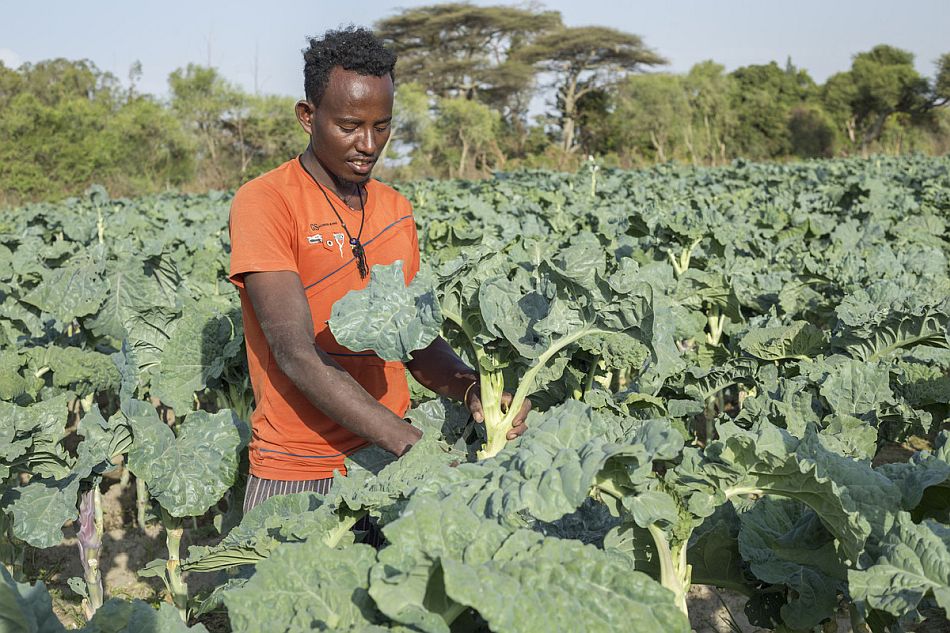By Hauke Dahl, Integrated Expert on Sustainable Scaling, IWMI
Despite global efforts, a $2.5 trillion annual financing gap stands in the way of reaching the Sustainable Development Goals (SDGs) by 2030. However, global capital is beginning to take environmental, social and governance (ESG) considerations into account when making investments, a process referred to as “sustainable finance”. Therefore, development actors must learn how to catalyze public and private resources to drive sustainable progress and deliver their impact at scale.

A workshop titled “Sustainable Finance for AR4D – Overview and Opportunities for Researchers”, run by IWMI in July 2021 offered insight into the role finance can play in creating a more sustainable and resilient global economy. Over 30 participants, including people from Africa, Asia and Europe, learned about the pressures and trends affecting the current financial system and investigated the strategic implications of these social and environmental challenges from a finance sector perspective. The participants, including those from IWMI and other CGIAR centers, and also from the Deutsche Gesellschaft für internationale Zusammenarbeit (GIZ) GmbH and the World Bank, explored how sustainable finance can open up new opportunities for agricultural research for development (AR4D) and strategically drive long-term returns.
The emergence of sustainable finance, barriers to adaption, trends and strategies
Even though the term ‘sustainable finance’ is associated with the use of capital to advance social and environmental progress, there are still multiple differing definitions at hand (see UNEP and European Commission).
There is however agreement on moving away from linear, growth-oriented financial models that fail to adequately price negative externalities and create an uneven playing field. This mindset shift requires systems thinking and the use of multidisciplinary expertise to deliver on the complex task of transitioning to a sustainable global economy. CGIAR as the world’s largest innovation network and leader in agricultural research for development plays a crucial role in unlocking opportunities for the financial community.
Specifically when it comes to financing water, research shows that water is a generally under-priced, under-valued and un-quantified resource. Even though the importance of efficient agricultural water management as a topic affecting every agricultural value chain is only increasing in the face of climate change, there are multiple barriers to adaption. A lack of appropriate tools and data along with the fact that there is no “one-size-fits-all” solution makes it difficult to scale up appropriate financing models. Additionally, the most prevalent investment models for water use and management benefit projects which are bankable, but may not maximize benefits for communities, the environment, and end-users.
Especially when it comes to financing opportunities for the Base of Pyramid, digital disruption provides a range of opportunities to supply low-income users with tools that improve their access to finance. Innovations like digital banking services, alternative credit scoring systems, peer-to-peer money lending platforms and apps for personal financial management help farmers increase their financial autonomy. The AR4D sector is increasingly leveraging such tools to deploy their innovations to a larger audience.
For the supply side of capital, a standardized language is necessary to identify and clarify sustainable investment opportunities. Impact investment frameworks such as the Climate Smart Agriculture (CSA) Programming and Indicator Tool are being used to track metrics, outcomes and impact of agricultural innovation alongside financial returns. Workshop participants have highlighted several further frameworks such as the Social Return on Investment Framework (SROI) and the Food and Agriculture Organization’s Framework for Evaluation of Sustainable Land Management (FESLM).
In fragile, high-risk environments such as the agriculture sector in the Global South, public sector actors engage in financing schemes to create attractive risk-adjusted return profiles for private investors while simultaneously advancing AR4D outcomes. When looking at how to combine traditional development funding with return-oriented private capital, two strategies are gaining more and more traction. The first is results-based-financing, a mechanism that usually includes the public sector funder (or donor), the organization implementing the project and private sector investors, provides rewards to individuals or institutions after agreed-upon results are achieved and verified. The second strategy, blended finance, describes the use of catalytic capital from public or philanthropic sources to increase private sector investment and allows organizations with different objectives to invest alongside each other while achieving their own objectives (whether financial return, social impact, or a blend of both). It sources capital from development and commercial funds to conceptualize financial structures that invest in organizations, activities, assets, projects, partnerships which create financial returns and deliver on the SDGs. However, Even though these mechanisms are gaining momentum, they have not yet been widely adapted by AR4D project leaders.
Conclusions and outlook
The workshop underscored an increasing demand for sustainable finance mechanisms in order to deliver on the SDGs in large global development projects in the face of climate change and other systemic threats. It also highlighted that changemakers need to develop multi-disciplinary skillsets to incorporate ESG-criteria into their financial and strategic decision-making, in order to open up the discussion for the broader global community and align incentives to unlock private capital for sustainable development.
The discussions provided important insights into how sustainable finance could potentially be used, such as for instance through green/social bonds, the inclusion of government subsidies to lower investment risks and the use of IoT devices for end-users to incentivize sustainable water use. The combination of different financial, technical and policy tools further emphasized the need for a systemic approach to the development of sustainable solutions which involve and benefit all stakeholders. If effectively implemented, the resulting impact towards reaching the SDGs could be immense.
The author would like to acknowledge support provided by the Fund for International Agricultural Research (FIA), a project by the Deutsche Gesellschaft für Internationale Zusammenarbeit (GIZ) GmbH. This work was also co-funded by the CGIAR Program on Water, Land and Ecosystems (WLE).

